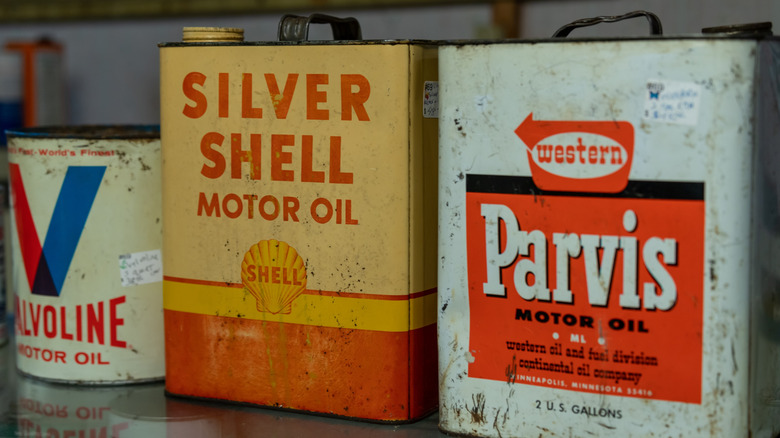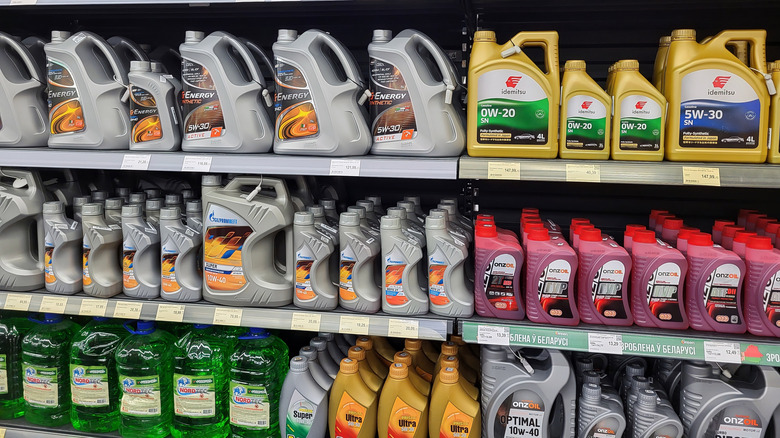When (And Why) Did Motor Oil Stop Coming In Metal Cans?
If you're a collector of vintage cars or know anyone that collects car-related memorabilia, you may be familiar with motor oil cans. These metalcans were heavy, durable, and even stylish, often sporting bold company logos and bright colors. But over the years, the look and feel of motor oil packaging changed from that retro vibe. So when and why did motor oil stop coming in metal cans?
The last hurrah for metal oil cans was in 1986, when Eagle Oil, citing cost issues, switched to plastic containers. Not only were the new containers cheaper than metal, they addressed additional concerns for the company, which was increasingly spending more money on compliance throughout the 1970's. Once Eagle rolled out plastic oil bottles, the company never looked back.
Other oil companies stopped using metal during the World War II shortage, due to the need for metal to make planes, ships, arms, and ammunition. Some companies used cardboard packaging with metal tops and bottoms.
Some companies sold motor oil in glass bottles
Vintage cans from the best motor oil brands have become collectors items and represent a different time in America, when the call of the open road was loud and strong. But those retro metal cans began disappearing during World War II and were eventually totally replaced by plastic. But those aren't the only materials used in motor oil packaging. One of the companies that used the aforementioned paper cartons was Quaker State, which made the switch to plastic in the mid-'80s.
Shell Oil began using glass bottles during the war. Like glass milk bottles, the oil bottles would be used, washed, then sent back to be refilled. The widespread switch to plastic was also a convenience for consumers. The new plastic bottles featured long necks for pouring, which eliminated the need for a separate funnel. This made changing your own oil much easier and less messy.

